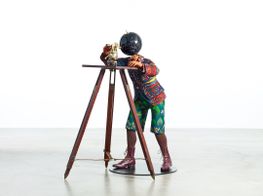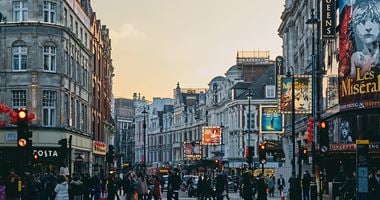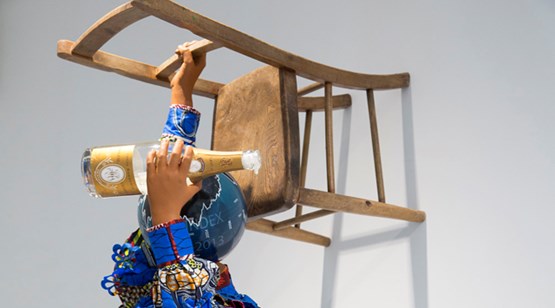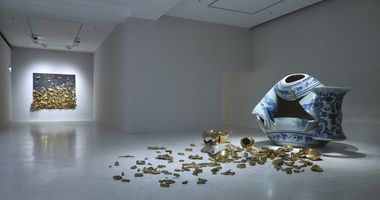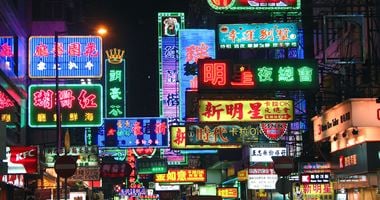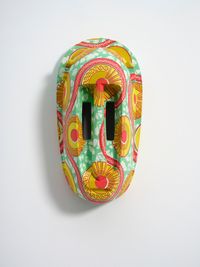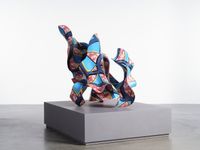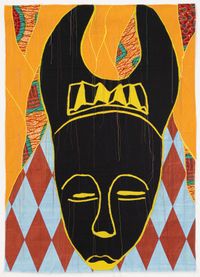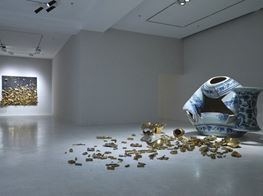Yinka Shonibare, MBE
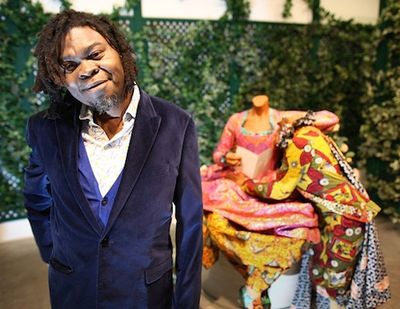
The work of artist Yinka Shonibare MBE is instantly recognisable. A multidisciplinary artist whose oeuvre encompasses installation, painting, video, and sculpture, he is most well known to date for his use of headless mannequins dressed in sumptuous period costumes striking theatrical poses within carefully constructed tableaux.
Although Shonibare often references Western history, art and literature in his work, the artist uses vibrantly patterned fabric that is most often associated with Africa to clothe his mannequins. Ironically, the archetypal, 'authentic' African fabric he uses is based on Indonesian batik and was first mass-produced in Holland before being sold into West Africa in the 19th century. What appears a witty and colourful device, in fact, addresses the complexities of identity and culture, and in particular colonialism and post-colonialism.
Shonibare moved from London to Nigeria at age three but returned again to London to study fine art, first at Byam Shaw College of Art and then at Goldsmiths College, where he received his MFA. In 2004, Shonibare was nominated for the Turner Prize and awarded the decoration of Member of the 'Most Excellent Order of the British Empire'.
He has exhibited at the Venice Biennial and internationally at leading museums worldwide. In 2008, his major mid-career survey commenced at the MCA Sydney and then in 2009 it toured to the Brooklyn Museum, New York and the Museum of African Art at the Smithsonian Institution, Washington DC. In 2010, Nelson's Ship in a Bottle became his first public art commission on the Fourth Plinth in Trafalgar Square. In 2013 he was elected Royal Academician by the Royal Academy of Arts, and this year his work is featured in a major exhibition of over 30 works at Yorkshire Sculpture Park entitled FABRIC-ATION.
In November this year, Shonibare will have his first solo exhibition in Hong Kong. The exhibition will take place at Pearl Lam Galleries' Pedder Street space. Entitled Dreaming Rich, the exhibition will continue Shonibare's exploration of colonialism and post-colonialism but will focus specifically on Hong Kong's modern-day relationship with labour, power and wealth. Anna Dickie took the opportunity to ask Shonibare about his inspirations and his latest work and its relationship to Hong Kong.
ADYou reference one of your art tutors instigating your exploration of the batik fabric by challenging you to create 'Authentic African work'. However, how did you arrive at the use of mannequins in your work? Was there a period of trial and error, an epiphany moment?
YSI started using mannequins after visiting the Victoria & Albert costume department, where I was inspired by the colonial dresses.
ADYou accepted an MBE in 2004, adopting the title into your working name, but saying, 'It was the last thing you would have expected of me'. Why did you say that?
YSBecause my work is about challenging the establishment, accepting an honour given by the establishment would have been expected to be declined.
ADYour upcoming exhibition at Pearl Lam will be your first solo show here. I understand the works were made specifically with Hong Kong in mind. In what way can they be viewed as a critique/ response to the city?
YSThe gap between the rich and the poor—while present in HK—is not particularly unique to the city; it's a shared universal problem.
ADI understand the Pearl Lam space will be split into two narrow corridors, and works will literally climb the walls, evoking a sense of constriction and possibly struggle. Tell me about the decision to change the gallery space and why that was important to you.
YSThe space's configuration is more appropriate for the kinds of works I plan to show in the gallery.
ADThe exhibition will include The Champagne Kids, which features three individual Victorian children dressed in batik fabric, playing on chairs with champagne bottles in hand. Please can you tell me more about these particular works?
YSChampagne Kids are intoxicated kids balanced precariously on chairs. Their behaviour symbolises the irresponsibility of the markets during the global financial crisis.
ADA number of your recent works reference 'kids'—Champagne Kids and Revolution Kids, for example. Why focus on this stage of life?
YSChildren are miniature versions of adults, and all manifestations of adult behaviour can be seen in them. Children are on the receiving end of bad adult behaviour, and they copy that behaviour.
ADThe centrepiece of the Hong Kong exhibition will be a work entitled Cakeman, a life-sized sculpture of an aristocrat dressed in an elaborate Victorian dress made out of your trademark batik fabric.
My understanding of the work is that it will depict a man bent double carrying a precariously balanced tower of colourful cakes on his back. The press release for the exhibition states that you are interested in the 'point at which survival turns into greed and excess'. Can you expand on this with regard to Cakeman?
YSCakeman is about the way that wealthy people can never have enough. It seems that the more money you have, the more you want, and people are not tired of constantly acquiring more, even when they are aware that there is a lot of poverty around. It is an expression of the gluttonous nature of human beings.
ADIs there an irony in critiquing wealth in a gallery space that possibly epitomises wealth in a city characterized by the pursuit of wealth and where art is arguably viewed as a luxury good?
YSYes, you are right; it can be critiqued and enjoyed at the same time.

